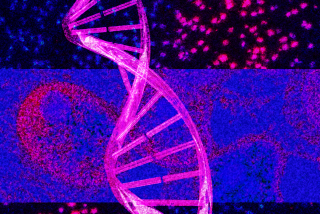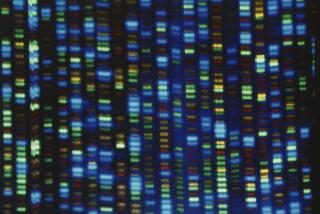Scientists expand catalog of human genetic variation

- Share via
Scientists are one step closer to unraveling how variations in the human DNA and may influence the incidence of disease.
On Wednesday, researchers reported the latest results from the 1000 Genomes Project, a large international collaboration that seeks to map out human genetic variation, in the journal Nature.
Sequencing DNA from 1,092 people from 14 populations (including Europeans, East Asians, Sub-Saharan Africans and people from the Americas) they identified 38 million DNA variants in the genome — the collection of 6 billion DNA letters that form the biological blueprint for a person.
Having such a “dense catalog” of DNA variants should help researchers figure out what genetic variations correlate with disease, said Carlos Bustamante, a geneticist at Stanford Medical School and a participant in the project. In the future, when researchers sequence the genome of a person with, say, diabetes, they’ll be able to compare the variations they find in that subject’s DNA to the 1000 Genomes reference genomes to do a sort of “first-level check” — to begin to figure out if a particular genetic difference is or isn’t the cause of the disease.
“You can now ask, has anyone seen this mutation before?” Bustamante said, adding that “if a variation is common, it’s unlikely that it underlies” a rare disease trait.
A pilot phase of the project, which looked at DNA from several hundred people, revealed more than 95% of common variants that appear with more than 5% frequency in people, the team reported in the new Nature paper. (For more on the initial 1000 Genomes results, check out this story by former L.A. Times writer Thomas Maugh II.) But important, lower-frequency genetic differences that may not have shown up in the smaller study account for the majority of differences among humans, Bustamante said.
One fascinating detail in the new research: patterns observed in the distribution of these lower-frequency variants reflected events in human history. For example, the new data showed that these rare variants, which are relatively new, tended to cluster in populations--suggesting that as populations have boomed in the last 10,000 years, novel mutations haven’t yet had time to spread widely.
Because of this localization of variation, in the future researchers will need to sequence genomes from a broad array of populations to make sure they catch rare and potentially disease-causing variants, Bustamante said.
That next phase of 1000 Genomes data-crunching is already underway, he added.







